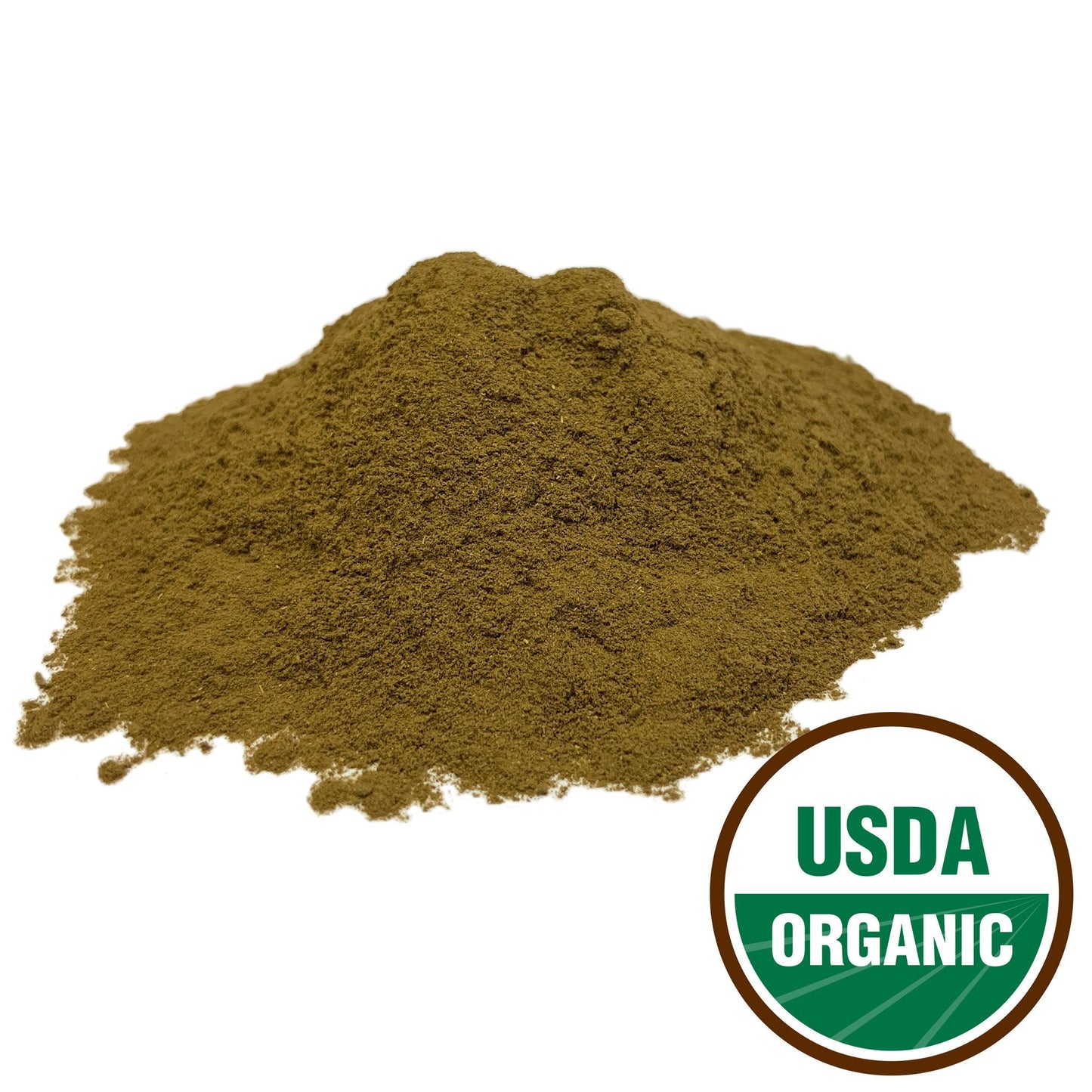Best Botanicals
Yellow Dock Root
Yellow Dock Root
Couldn't load pickup availability
Yellow Dock is very valuable for all skin issues and has therapeutic characteristics that are similar to sarsaparillas (Smilax officinalis) and turkey rhubarb (Rheum palmatum). A 1-5 foot perennial, growing from a deep, yellow root. The alternate basal leaves are wavy edged & blue-green. Leaves on the flower stalk, are similar to those at the base but half the size. The tall flower spikes of inconspicuous greenish flowers are followed by 3-winged fruits which turn dark brown in the fall.
A common weed throughout North America in waste places & fields. The young leaves can be used for cooked greens. If bitter, cook in 2 or more changes of water. They are rich in Vitamins A, C. It is a astringent, chologogue, & tonic. A decoction is made by boiling 1 teaspoon of the root in 1 cup of water. Take 1-2 cups a day. Use in small doses.
UPC: 084783024026.
Origin(s): Croatia, India, Indonesia, Poland.
Latin Name(s): Rumex crispus.
Also known as: Curled Dock, Curly Dock, Sour Dock, Narrow Dock, Garden Patience.
Plant Part(s) Used: Root.
Appearance: Yellowish brown.
Aroma: Musty, spicy.
Taste: Slightly bitter.
GMO Status: Non-GMO.
Allergen: None.
Additives: Free of any additives or preservatives.
Applications / Preparations: Can be put into capsules, teas or infused as an herbal extract. For cosmetic use can be put in a skin poultice.
Storage: Store in a sealed container in a cool, dry place.
Shelf Life: It is very difficult to pin down an exact expiration date for most single herbs as they do not really expire, they lose potency or strength over time but will still have value. Unlike synthetic material or drugs, herbs can contain many constituents that contribute to their medicinal effects. Even if when we know what the active constituents are, there are often many of them in a single herb, each with different rates of degradation. Some herbs lose their effect more easily. Other herbs that possess more stable compounds such as alkaloids or steroids will last much longer.
A huge part of the degradation rate of herbs depends also on the storage conditions of the herb, & even on the quality of the herb before storage – how it was grown, harvested, dried & processed. If the product is left in hot places or open to sunlight then it will degrade much quicker than if it was stored in cool, dry place & sealed tightly.
A good rule of thumb is that herbs should be stored no longer than 2-3 years but many herbs will have great strength much longer than that. To determine if a an herb is still good you can check the appearance & aroma. Herbs that are no longer acceptable will have lost much of its vibrant color & will instead appear dull & faded. The bigger key though is to smell the raw materials to see if the potent aroma is still present.
Warning: None known.







